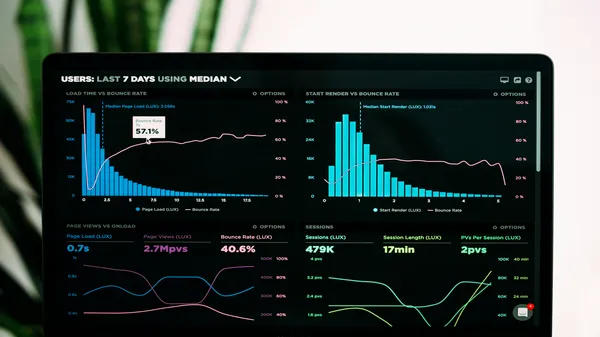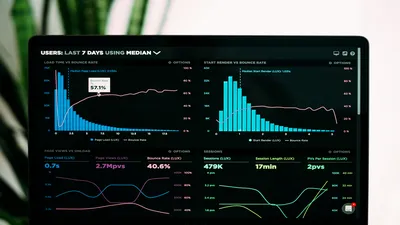For many intraday traders, reading candlestick charts is like having a secret weapon in their trading arsenal. Whether you're a seasoned professional or just starting your intraday trading journey, this guide will help you understand how to read candlestick charts effectively. With clear explanations, real-life examples, and actionable tips, you'll soon be navigating the complexities of the market with confidence.
Understanding the Basics of Candlestick Charts
At its core, a candlestick chart is a type of price chart used in technical analysis to display the high, low, open, and closing prices of a security for a specific period. Each candlestick provides a concise snapshot of market sentiment during that time, making it an invaluable tool for day traders.
Anatomy of a Candlestick
Before diving into advanced strategies, it's essential to know the key components of a candlestick:
- Body: The rectangular area that shows the difference between the open and close prices. If the close is higher than the open, the body is typically colored green or white to indicate bullish sentiment. If the close is lower than the open, the body is usually colored red or black.
- Wicks (Shadows): The thin lines above and below the body represent the high and low prices during the time period. They provide an indication of market volatility and the range of price movement.
- Color: While the body’s color can vary by charting system, the color convention is important. Green/white candles generally indicate upward movement, whereas red/black candles indicate downward movement.
Imagine you’re looking at a weather forecast: the candlestick's body is like the average temperature, while the wicks represent the extremes of the day. Understanding these elements helps you see not only where the market settled but also the overall range of movement.
Why Candlestick Charts Are Essential for Intraday Trading
The fast-paced nature of intraday trading demands tools that provide quick, actionable insights. Candlestick charts offer several benefits that make them indispensable for day traders:
- Instant Visual Clarity: The design of candlestick charts makes it easy to spot trends and reversals quickly.
- Rich Market Information: They combine four data points (open, high, low, close) in a single graphical representation.
- Pattern Recognition: Candlestick patterns, such as doji, hammer, or engulfing patterns, help traders anticipate potential price movements.
- Versatility: Whether you're analyzing stocks, forex, commodities, or indices, the fundamental principles of reading a candlestick chart remain the same.
For intraday traders, recognizing candlestick patterns can translate into capturing quick profits or avoiding risky trades. When a pattern signals a potential reversal or trend continuation, timely action can mean the difference between a win and a loss.
Key Candlestick Patterns for Intraday Traders
A crucial part of mastering candlestick charts is recognizing common patterns and understanding what they signify. Here are some of the most important patterns to know:
1. The Doji
A doji is a candlestick with a very small body, where the open and close prices are nearly equal. It signifies indecision among traders. In intraday trading, a doji often points to a potential reversal when found after a strong trend.
- Example: Imagine a stock that has been steadily rising throughout the morning. Suddenly, you see a doji. This might signal that the momentum is slowing, suggesting that a reversal or consolidation could be imminent.
2. The Hammer and Hanging Man
Both the hammer and the hanging man have similar appearances — a small body with a long lower shadow. The difference lies in where they appear in a trend:
- Hammer: Appears during a downtrend and indicates a potential bullish reversal. The long lower shadow shows that sellers pushed the price down during the session, but buyers managed to bring it back up.
- Hanging Man: Seen in an uptrend, it warns of a potential bearish reversal. Even though buyers were in control for most of the session, the long lower shadow suggests some selling pressure.
3. Bullish and Bearish Engulfing Patterns
Engulfing patterns are two-candle formations where the body of the second candle completely engulfs the body of the first:
- Bullish Engulfing: Appears in a downtrend, where a small red candle is followed by a large green candle that completely covers it. This indicates that buyers are stepping in strongly.
- Bearish Engulfing: Found in an uptrend, where a small green candle is overtaken by a large red candle, suggesting that sellers are taking control.
4. The Morning and Evening Star
These are three-candle patterns that signal reversals:
- Morning Star: A bullish reversal pattern that appears at the bottom of a downtrend. It starts with a long red candle, followed by a small body (which can be either red or green), and is then confirmed by a large green candle.
- Evening Star: A bearish reversal that occurs at the top of an uptrend. It begins with a long green candle, is followed by a small-bodied candle, and ends with a large red candle.
Understanding these patterns isn’t merely academic—it offers traders the ability to make informed decisions based on the underlying market sentiment. For example, spotting an engulfing pattern early in the day might alert you to set up for a reversal, allowing you to enter or exit positions at the right moment.
Integrating Candlestick Analysis into Your Intraday Trading Strategy
Now that you understand the basics and key patterns, how can you effectively integrate candlestick analysis into your intraday trading strategy? Here’s a step-by-step approach:
1. Identify the Trend
Before diving into pattern recognition, take a moment to assess the overall market trend. Are prices generally rising, falling, or moving sideways? Identifying the trend provides context for interpreting candlestick patterns. For instance, a hammer during a sustained downtrend might be more significant as a potential reversal signal compared to when it appears in a sideways market.
2. Monitor Support and Resistance Levels
Candlestick charts work best when combined with support and resistance analysis. These levels help you identify where the price is likely to bounce or reverse. When a candlestick pattern forms near a significant support or resistance level, its signal is often stronger and more reliable.
3. Look for Volume Confirmation
Volume is a critical indicator that adds weight to a candlestick pattern. For example, a bullish engulfing pattern accompanied by high trading volume is a stronger indicator of a trend reversal compared to the same pattern with low volume. Integrate volume analysis into your routine to validate the signals you're seeing.
4. Use Technical Indicators
Pairing candlestick patterns with other technical indicators—like moving averages, RSI (Relative Strength Index), or MACD (Moving Average Convergence Divergence)—can help filter out false signals. These additional indicators provide a secondary confirmation, making your trading decisions more robust.
5. Set Up Clear Entry and Exit Points
A disciplined approach is key to success in intraday trading. Use candlestick patterns to set up practical entry and exit points. For example, if you observe a morning star pattern at a known support level, consider this as a trigger to enter a long position. Similarly, if you spot a bearish engulfing pattern near resistance, it might be an opportune moment to exit or short a position.
Real-Life Example: Trading with Candlestick Patterns
Let’s consider the story of Rohan, an intraday trader who initially struggled with the fast-moving market in the early hours. After learning to interpret candlestick charts, Rohan began to incorporate these patterns into his daily strategy.
On one particular morning, he noticed a doji formation after a prolonged bullish run, which was immediately followed by a bearish engulfing pattern. This combination of signals, along with a noticeable drop in trading volume, led Rohan to decide that the uptrend was losing momentum. He shortened his long position, and as predicted, the market reversed by mid-day, saving him from a potential loss and even enabling a quick profit by exiting just before the price dipped further.
Rohan’s experience is a testament to the power of candlestick analysis. By paying attention to subtle cues and combining them with other market indicators, you can not only prevent losses but also pinpoint opportune moments to trade.
Best Practices for Intraday Traders Using Candlestick Charts
As you hone your ability to read candlestick charts, consider these best practices to enhance your trading performance:
- Practice Patience: Not every candlestick pattern will yield a clear signal. Patience is essential in waiting for confirmation before making a move.
- Start Small: Experiment with smaller trades as you refine your strategy. Learn from each trade, knowing that even experienced traders encounter false signals.
- Maintain a Trading Journal: Document your trades and the rationale behind them. Over time, your journal will be an invaluable resource for understanding your decision-making process and improving your strategy.
- Combine Multiple Sources of Data: Relying solely on candlestick patterns can be risky. Use them in tandem with volume, support/resistance levels, and other technical indicators for a comprehensive view of the market.
- Continuously Educate Yourself: The market is ever-changing. Keep up with new techniques, revisit historical charts, and participate in trading communities to stay sharp.
Overcoming Common Pitfalls
While learning to read candlestick charts is empowering, it's equally important to be aware of common pitfalls:
- Overreliance on Patterns: No single pattern guarantees a market move. Always seek confirmation from other indicators and the overall trend.
- Rushing Decisions: Intraday trading requires swift decisions, but hasty moves based on incomplete signals can be detrimental. Take a moment to review all available data before entering a trade.
- Ignoring Market Context: Sometimes, external factors like economic data releases or geopolitical events can influence market sentiment. Be mindful of the bigger picture when analyzing candlestick charts.
- Underestimating Emotional Bias: Trading in the heat of the moment can lead to impulsive decisions. Staying disciplined, having a clear strategy, and using stop-loss orders can help you manage risk effectively.
Tools and Resources to Enhance Your Candlestick Analysis
The modern trading ecosystem offers a plethora of tools designed to assist with technical analysis. Here are a few resources that can further refine your candlestick reading skills for intraday trading:
- Trading Platforms: Many trading platforms come equipped with advanced charting tools that allow you to customize candlestick charts, overlay technical indicators, and even simulate intraday trading scenarios.
- Educational Courses and Webinars: Consider enrolling in courses that focus on technical analysis and candlestick patterns. Many experienced traders share their insights through webinars and online forums.
- Books and Publications: There’s a wealth of literature on candlestick charting, written by experts who have dedicated decades to studying market behavior.
- Community Forums: Engaging with online trading communities can offer fresh perspectives, and sharing experiences with other traders can help refine your approach.
Final Thoughts: Embrace the Art and Science of Candlestick Analysis
Mastering the art of reading candlestick charts for intraday trading is a journey—a blend of art and science. Each candle tells a story about market sentiment, and with practice, you’ll begin to notice nuances that many overlook. Whether it’s a fleeting doji indicating indecision or a bullish engulfing pattern heralding a market reversal, every candlestick provides an opportunity to make informed decisions.
Remember, the goal isn’t to predict the market with 100% accuracy but to equip yourself with a robust toolset that improves your odds. With discipline, thorough analysis, and continuous learning, candlestick charts can elevate your intraday trading strategy to new heights.
Take the time to study historical charts, simulate trading scenarios, and gradually incorporate these insights into your real-world strategy. Over time, you'll grow more confident, learn to trust your analytical skills, and navigate the fast-paced world of intraday trading with greater ease.
Happy trading, and may your candlesticks always point you in the right direction!




.webp)

.webp)



.webp)
.webp)
.webp)
.png)